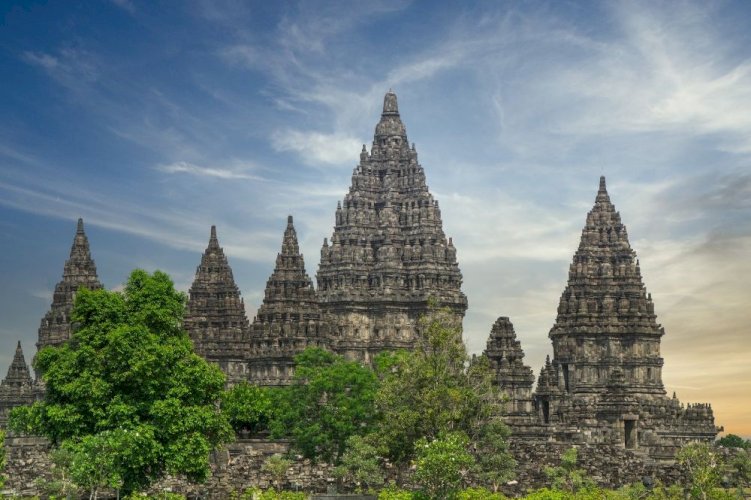
Posted 15 Januari 2025 by Admin
Yogyakarta, often referred to as the cultural heart of Indonesia, is home to some of the most iconic landmarks in the world. Among these, the ancient temples of Borobudur and Prambanan stand as timeless testaments to the region’s rich history and spirituality. These two UNESCO World Heritage Sites are not just architectural marvels but also windows into the past, offering visitors a journey through centuries of cultural and religious evolution.
Borobudur: A Buddhist Masterpiece
Nestled amidst lush green hills and volcanic peaks, Borobudur is the world’s largest Buddhist temple. Built in the 9th century during the reign of the Sailendra Dynasty, this majestic structure is a symbol of devotion and artistic excellence. The temple is designed as a massive mandala, representing the Buddhist cosmology.
As you ascend its nine stacked platforms, you’ll encounter over 2,600 intricately carved relief panels depicting stories from Buddhist scriptures. These panels provide insight into the daily life, beliefs, and values of the time. At the summit, the central dome is surrounded by 72 stupas, each housing a serene Buddha statue. Standing here, you’ll witness breathtaking views of the surrounding landscape, especially during sunrise when the first rays of light bathe the temple in a golden hue.
Prambanan: A Hindu Architectural Wonder
Just a short drive from Borobudur lies Prambanan, an extraordinary Hindu temple complex dedicated to the Trimurti—Brahma the Creator, Vishnu the Preserver, and Shiva the Destroyer. Constructed in the 10th century, Prambanan showcases the peak of Hindu architectural ingenuity.
The main complex consists of three towering temples, with the central one dedicated to Shiva, standing at an impressive height of 47 meters. Each temple is adorned with intricate stone carvings depicting scenes from the Ramayana, one of Hinduism’s most revered epics. During the evening, the temples are beautifully illuminated, and visitors can enjoy a traditional Ramayana ballet performance in an open-air theater with the temples as a stunning backdrop.
A Harmonious Blend of Cultures
Despite their distinct religious origins, Borobudur and Prambanan reflect the harmonious coexistence of Buddhism and Hinduism in ancient Java. This cultural synthesis is a hallmark of the region’s history and continues to inspire people today.
Practical Tips for Visiting
Timing: Arrive early at Borobudur for the sunrise experience and visit Prambanan in the late afternoon to catch the sunset and enjoy the evening ballet.
Guides: Hire a knowledgeable guide to fully appreciate the historical and spiritual significance of these sites.
Dress Appropriately: Respect the sacredness of these temples by wearing modest clothing. Sarongs are often provided at the entrance.
Tickets: Consider purchasing a combined ticket to save on entrance fees.